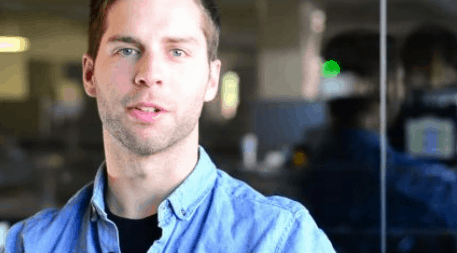This is a review of the online course Complete UX Fundamentals, by Adam Treister and Pablo Stanley. This is part of our series of reviews of online UX courses.
Read some of our other reviews or browse the full list of online UX courses.
Course Information
- Course Name: Complete UX Fundamentals
- Author: Adam Treister & Pablo Stanley
- Hosted by: udemy
- Length: 63 lectures (~7.5 hours of video)
- Intended Audience: Beginner and intermediate designers or anyone seeking to launch an app of their own
- What You’ll Learn: A lot! A brief history of UX, user research methods, tools, usability testing methods, visual design principles, user psychology, and prototyping.
- Assumed Knowledge: A basic knowledge of Adobe Illustrator would be useful, but not critical. A broad understanding of web design would also be beneficial.
- Price at time of review: US $166
Review
The course begins with an intriguing introduction into UX theory (delivered by Adam Triester), starting with a brief history. Section 3 (Understanding Users) is particularly interesting, dealing with user research processes, tools and methods. The various tools available for conducting user research are introduced, along with guidance around choosing the most appropriate ones for the varying stages of the research process. Adam then discusses some examples of real world user research projects that he has participated in.
Section 4 (Information Architecture) outlines the basics of information architecture, structure and two basic website models. I skimmed over the sections on the principles of visual and layout design, because I am already experienced in those areas. I suspect that other intermediate designers would probably feel the same way.
The last theoretical section is about user psychology, which I found particularly beneficial. Adam guides you through user motivations and emotions, outlining a few behaviour models that will help you during decision processes. During the theoretical part of the course there are plenty of visuals aids to assist with understanding the concepts that are being introduced.
The final two sections are taught by Pablo Stanley. In these sections Pablo designs a mobile app from scratch and then prototypes it using Marvel. You can download the applicable assets and follow along with each lesson. I found these stages a bit boring, and skimmed through a few of the lessons. It felt a bit like watching Pablo talk to himself while working on an assignment.
The thing that lets down this part of the course is the lack of explanations around decisions. Why did Pablo choose that button? Why did he decide on those colours? Any designer can put buttons onto a prototype, but applying the knowledge earlier imparted by Adam is another thing.
Presenter
The course is co-taught by Adam Traister and Pablo Stanley. Adam walks you through the theoretical knowledge while Pablo prototypes an app based on that theory.
Adam is an entrepreneur, architect, marketer and designer; and is the founder of Student Source. Specialising in small business and startups to launch and test new products, Adam is a finalist of Cincinnati Innovates, a winner of XLab, UpTech Business Accelerator, and SemiFinalist of NYC Take the Helm.
A great tutor with the ability to communicate ideas clearly, Adam is engaging and keeps your focus on topics which might otherwise be a bit boring.
Pablo Stanley is a San Francisco based product designer working at Udemy. He’s a passionate illustrator, “juicy button” lover, geeky music composer, and a writer of comics. When Pablo talks, you feel like you’re sitting next to him. He’s friendly, funny, and loves the word “juicy”.
Pros
- The course provides a broad basic knowledge of UX
- There are interesting quizzes after each section
- The Udemy interface is friendly
- A Certificate of Completion is offered at the end of the course
Cons
- There is a lack of cohesion between the two tutors and parts of the course
Summary
The theoretical part of the course – taught by Adam Treister – is engaging and well thought through. Someone with a good knowledge of design, but very little UX experience will find the sections on research, software and psychology useful and interesting. The sections devoted to visual principles and layout structure could perhaps be more detailed, with real life examples to support the theory.
The practical part of the course is disappointing and doesn’t mesh well with the first part of the course. I want to apply the knowledge gained in first sections to prototyping an app, but I’m left wanting.
This course aims to be all things to all people, and it goes a long way towards that goal, but you can’t make everyone happy all of the time!
- Content (how useful, up to date, practical, and comprehensive): 7/10
- Delivery (presentation style, pace, clarity, authority): 7/10
- Production (video quality, audio quality, editing): 9/10
- User Interface (reliable infrastructure, usable interface, convenient): 9/10
- Overall rating: 7/10
Course Contents
- Introduction
- The History of UX and ‘The Basics’
- Understanding Users
- Information Architecture
- Visual Design Principles
- Functional Layout Design
- User Psychology
- Real World Practice: Prototyping a Mobile App
- Real World Practice: Setting up Your Prototype Using Marvel App
The Complete UX Fundamentals course is hosted at udemy. Note: This post contains affiliate links, so if you do decide to enrol in the course, we’ll receive a percentage of the sale, to help pay the hosting bills.

